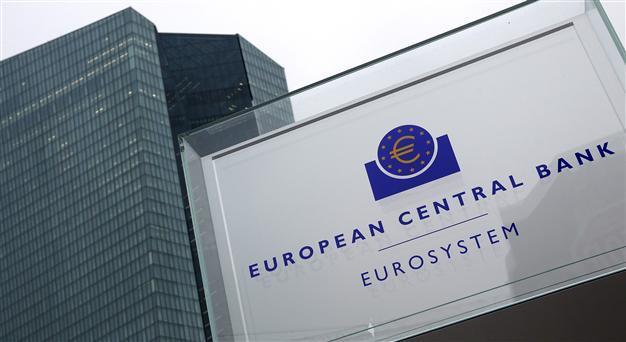Euro hits new 11.5-year dollar low as ECB starts bond buying program
LONDON - Agence France-Presse

he European Central Bank announced on March 9, 2015 that it and the national central banks of the euro area have started buying bonds as part of the long-awaited purchase programme to kick-start inflation in the single currency area. AFP Photo.
The euro dived on March 9 to a new 11.5-year low against the dollar as the European Central Bank kicked off its radical 1.1-trillion-euro ($1.2-trillion) bond-buying program, known as quantitative easing.Sentiment was also weighed down by concerns over Greece, with Athens due to present its reform plans to Brussels in order to secure a financial lifeline.
In Asian trading hours, the shared eurozone unit sank to $1.0823, last seen in September 2003, having hit a similar low on Friday as upbeat US payrolls data boosted expectations for a Federal Reserve rate hike.
“Strong U.S. nonfarm payroll numbers punished the euro on March 6, but this morning’s roll-out of the eurozone’s QE program saw the single currency drop even further,” said ETX Capital analyst Daniel Sugarman.
In later morning London deals, the euro recovered slightly to stand at $1.0876, up from $1.0842 late in New York on March 6.
The Frankfurt-based ECB announced yesterday that it and the national central banks of the euro area have started buying bonds as part of the long-awaited purchase program to combat the deflation threat.
Further details about the purchases, the amounts or whether they were public or private-sector bonds, were not immediately available.
However, Europe’s main stock markets sank as investors took profits from last week’s ECB-inspired gains.
The U.S. Federal Reserve had ended its own QE program in October.
“The euro looks likely to remain weak over the coming weeks given that the ECB and Federal Reserve appear on diverging tracks in terms of monetary policy,” CMC Markets analyst Michael Hewson told AFP.
“With 10 yield spreads between U.S. treasuries and German bunds wider than they have ever been, the prospect of further euro losses towards parity remains a distinct possibility in the coming weeks.”
















